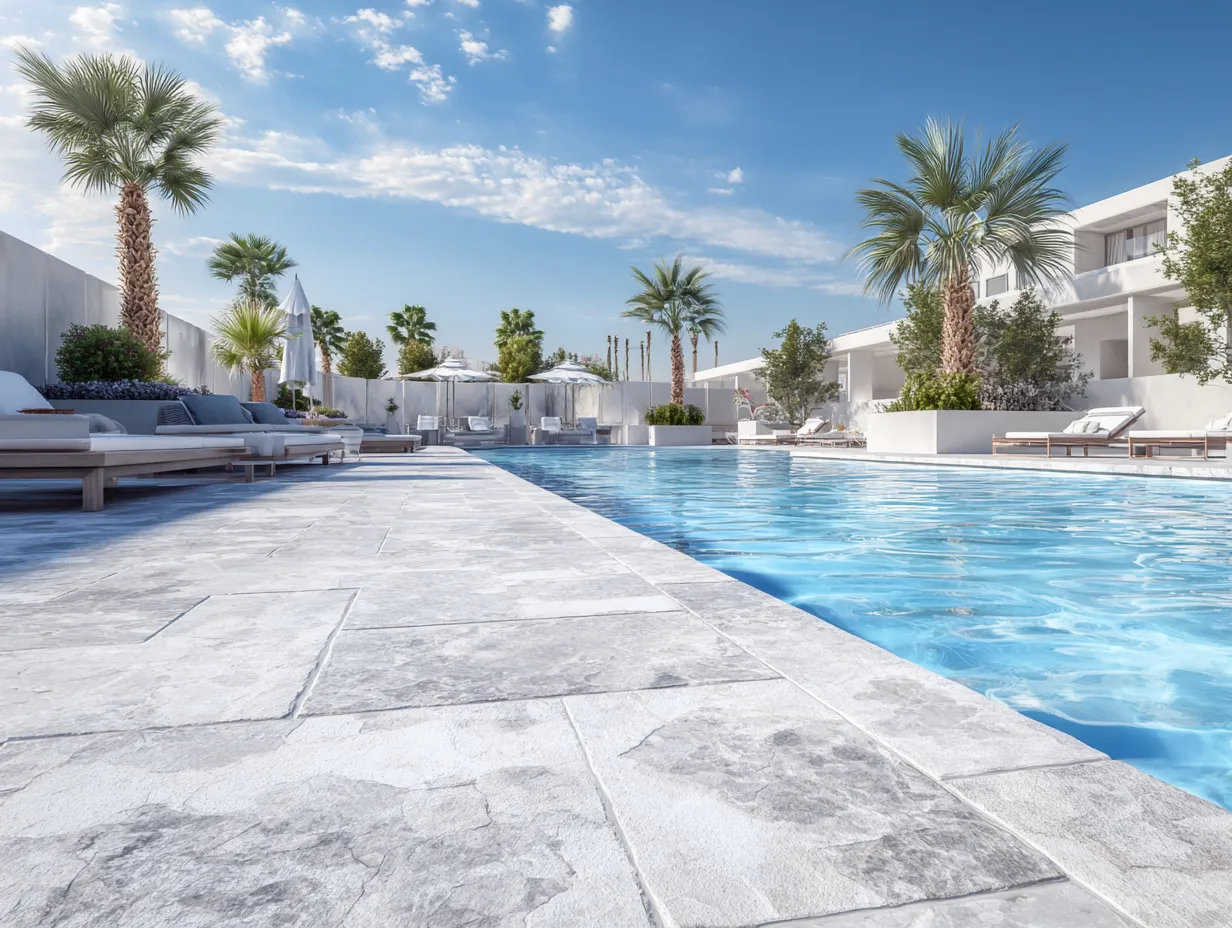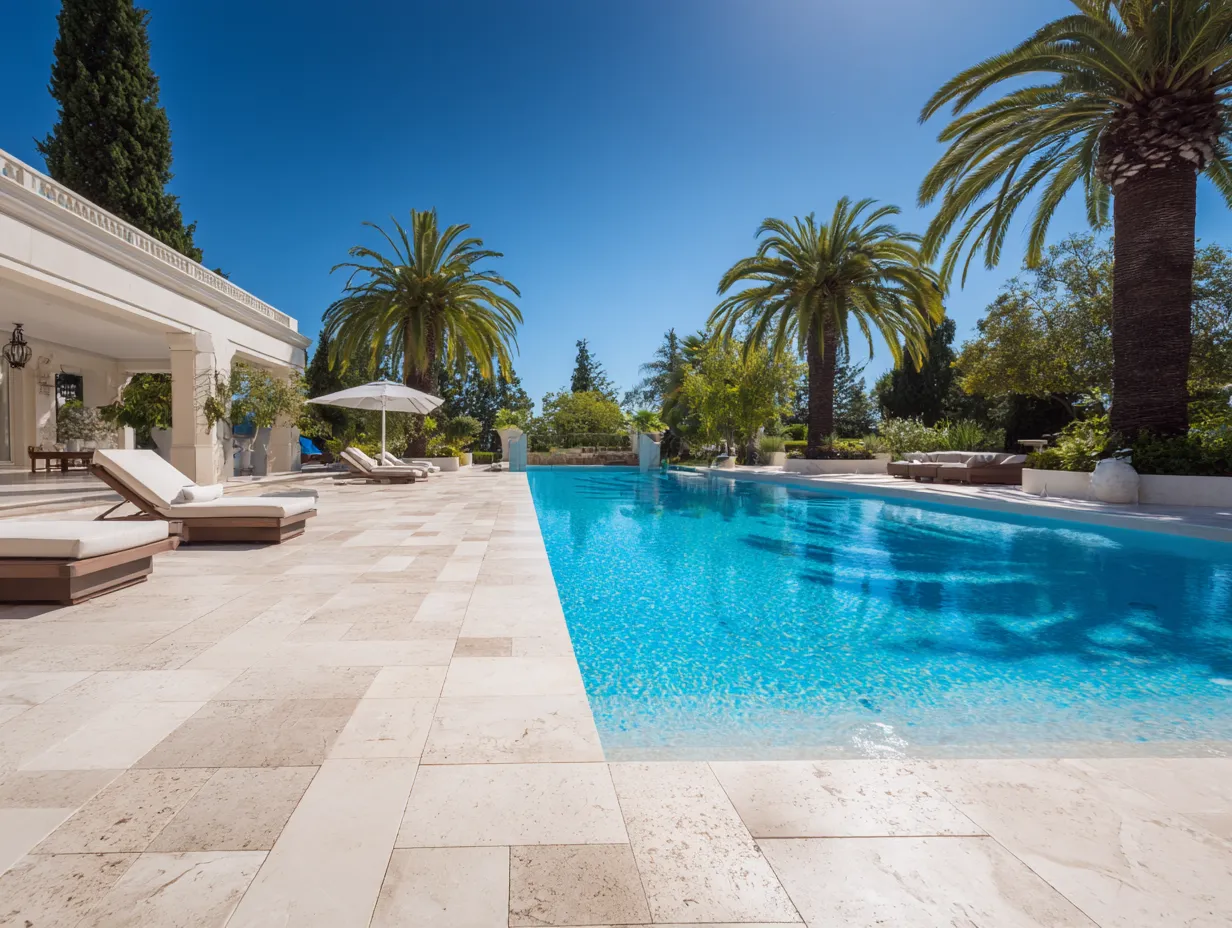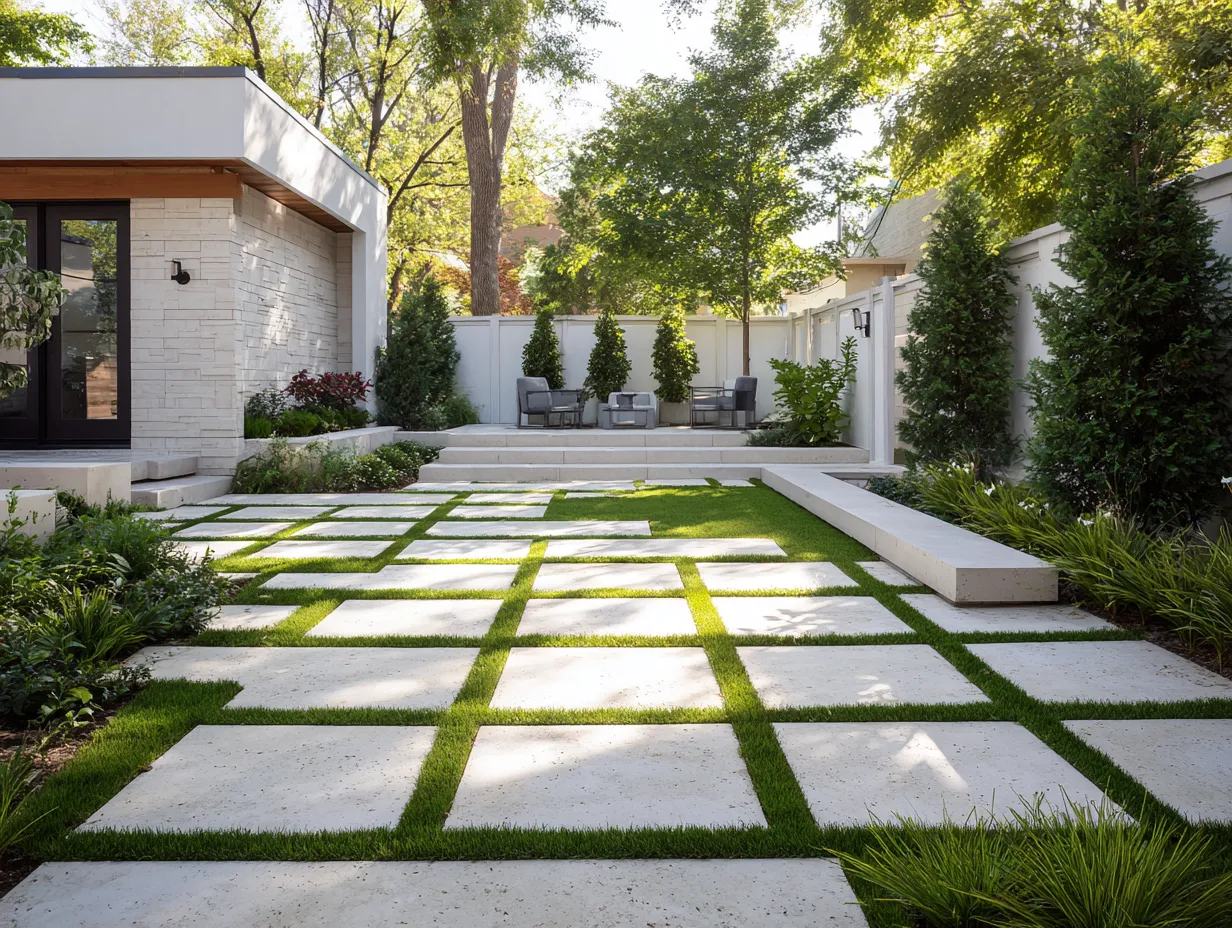How to Choose Outdoor Pavers (2025 Guide)
From patios and driveways to pool decks and walkways, the right paver transforms your outdoor space. This practical guide compares materials, finishes, slip-resistance, climate fit, installation, and maintenance—so you can buy once, install right, and enjoy for years.



Why the right paver matters
The “best” outdoor paver isn’t universal—it depends on climate, use case, and finish. A light, cool-to-the-touch travertine is ideal for a sun-drenched pool deck, while a dense limestone or high-strength concrete is better for driveways. The payoff for choosing well is huge: better slip-resistance and comfort, lower lifetime maintenance, improved drainage, and stronger curb appeal (which can nudge resale value upward).
Pro tip: Start with your application (pool, patio, driveway) and climate (freeze-thaw vs. hot/humid). Then shortlist materials and finishes that match those conditions.
Paver materials compared
Natural Stone Pavers (Travertine, Marble, Limestone, Granite)
Pros: Premium look and feel, timeless aesthetics, excellent heat behavior (especially light travertine), and long lifespan when properly installed. Wide range of finishes—tumbled or sandblasted for slip-resistance, honed for refined spaces (avoid polished outdoors).
Cons: Higher upfront cost than concrete/brick; needs correct base prep, drainage design, and occasional sealing. Some stones (like marble) require non-polished finishes for wet areas.
Best for: Pool decks, upscale patios, walkways; limestone/granite for driveways due to density. Explore our Outdoor Pavers to see curated natural stone options.
Concrete Pavers
Pros: Budget-friendly, consistent sizing, endless shapes and colors, high compressive strength variants for driveways. Easy to replace damaged units.
Cons: Color fading over time (UV), may heat up more than light natural stones, patterned surface can feel less authentic.
Best for: Driveways, high-traffic patios, projects requiring tight budgets or custom colors.
Brick Pavers
Pros: Classic look, excellent for walkways and heritage homes, strong in freeze-thaw with proper base.
Cons: Limited color palette (earth reds/browns), can be slick when algae/ice are present unless sanded/sealed appropriately.
Best for: Walkways, patios in traditional designs, edging accents.
Porcelain Pavers
Pros: Very low water absorption, stain-resistant, consistent textures, many stone/wood looks, excellent for modern designs and rooftops (on pedestals).
Cons: Requires careful installation on correct substrates; cut edges can be sharp; thermal comfort varies by color.
Best for: Contemporary patios, roof terraces, some pool surrounds (with anti-slip ratings).
Key factors & decision checklist
1) Climate & slip-resistance
- Hot & sunny: Choose light colors (e.g., light travertine) that stay cool underfoot; prefer tumbled or sandblasted finishes around pools.
- Freeze-thaw: Use dense stone (granite/limestone) or concrete with proper base, drainage, and edge restraints.
- Coastal/salt: Use materials/finishes tolerant to salts and chlorine exposure; rinse regularly around pools.
2) Application & loads
Driveways demand a deeper base and dense material; patios/walkways are more forgiving. Plan slope (≈2%) away from structures to avoid puddling; consider permeable bases where code or site conditions suggest it.
3) Finish, texture & comfort
Sandblasted and tumbled textures add grip and a barefoot-friendly feel, perfect for pool decks. Avoid polished stone outdoors (slippery when wet).
4) Color & style
Light neutrals (creams, beiges, soft greys) visually enlarge spaces and reflect heat; charcoals create contrast but run warmer. Pattern choices—French pattern, herringbone, running bond, ashlar—affect both traction and aesthetic rhythm.
5) Size, thickness & pattern
Larger formats reduce joints (sleek look) but need a flatter substrate; smaller modules add traction and flex better on slight undulations. For driveways, confirm thickness and base specs per local standards.
6) Budget & lifetime cost
Natural stone can outlast cheaper options, offering lower lifetime cost despite a higher upfront. Balance purchase price with installation labor, base prep, sealing, and periodic maintenance.
7) Installation & base design
Most residential pavers are sand-set over a compacted base; mortar-set suits certain substrates and edge conditions. Use geotextile where soils are unstable; lock edges with restraints to prevent creep.
Decision checklist (quick scan)
- Climate: hot/sunny vs. freeze-thaw vs. coastal
- Use: pool / patio / driveway / walkway
- Finish: tumbled or sandblasted for wet/barefoot zones
- Thickness & base depth sized to loads
- Color heat behavior (light = cooler)
- Sealing plan + maintenance rhythm
Best picks by application
Pool decks
Top choice: Light-colored travertine with a tumbled or sandblasted finish—cooler underfoot and naturally textured.
Patios
Upscale patios: travertine or limestone. Modern minimal: porcelain. Budget-friendly: concrete pavers.
Driveways
Dense stone (limestone/granite) or high-strength concrete with a proper base. Patterns like herringbone add strength.
Walkways & garden paths
Brick for classic charm, travertine for elegance, concrete for cost-effective consistency.
Maintenance & sealing tips
- Sealing: Apply breathable, exterior-rated sealers. Re-seal intervals vary.
- Cleaning: Rinse routinely; spot-clean stains quickly.
- Joints: Keep polymeric sand topped up.
- Winter care: Avoid harsh de-icers; use calcium magnesium acetate.
Common mistakes to avoid
- Choosing polished stone outdoors
- Under-estimating base depth
- Ignoring slope/drainage
- Using dark colors around barefoot zones
- Skipping edge restraints
- Wrong sealer selection
Ready to choose your outdoor pavers?
Browse our curated selection of travertine, marble, limestone, and more — sized and finished for patios, pool decks, walkways, and driveways. We ship nationwide and offer design help.
FAQs
- What is the best paver for pool decks?
- Light-colored travertine with a tumbled or sandblasted finish.
- Are natural stone pavers hard to maintain?
- No—use breathable sealers and routine cleaning.
- Which pavers are best for driveways?
- Dense limestone/granite or high-strength concrete.
- Travertine vs. concrete: which lasts longer?
- Both can last decades; travertine offers premium aesthetics.

